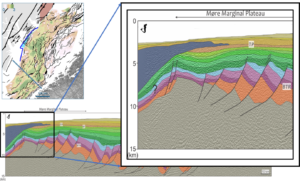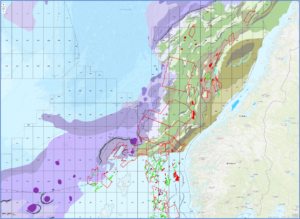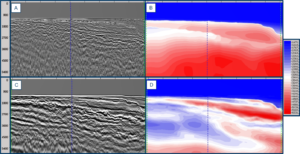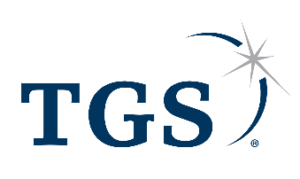27th July 2021
Registration
PESGB members can register free of charge via the membership platform
If you are interested in becoming a member of PESGB please visit: https://www.ges-gb.org.uk/membership/
Events Information
Speaker: Simon Baldock, TGS
Topic: Must love lava – Recent Advances in Sub-Basalt Processing
Abstract
In several basins around the world prospectivity potential exists beneath volcanic intrusions; these basins exist offshore (India, Angola, Brazil, Greenland) and onshore (Argentina, Siberia). In Europe, large areas of northwest European waters are affected by basaltic flows extruded in the Paleocene during extensional phases related to the break-up of Northwest Europe and Greenland. This leads to the challenge of imaging rotated fault blocks beneath the basalt (figure 1).

Figure 1: schematic illustration of the geology of the More Marginal Plateau, showing the sub-basalt imaging challenge.
The difficulty of processing sub-basalt data is well known. Challenges are caused by the rugosity and high impedance contrast of the basalt coupled with extreme heterogeneity in its internal structure. High-frequency energy is scattered and the low-frequency energy that penetrates through the basalt is overprinted by high energy peg-leg and interbed multiple trains. While the reflection coefficients of the basalt are high, reflection coefficients of sub-basalt reflectors are small and easily obscured by strong noise or multiples.
This talk will draw on TGS’ 10+ years’ experience of imaging beneath and around basalts in the Atlantic Margin region and will utilize synthetic and real data examples from TGS 3D surveys in the Atlantic Margin (figure 2).

Figure 2: map of the Atlantic Margin region showing volcanics (purple areas) and TGS 3D surveys (red polygons).
While Kirchhoff methods have often been used to image beneath basalt, the complexity of the wavefield requires wave-equation solutions: Reverse Time Migration and Full Waveform Inversion (figure 3). These techniques, together with acquisition technologies for improved imaging beneath basalt, will be presented using recent datasets from the Atlantic Margin.

Figure 3: imaging and model building improvements using DM FWI and RTM; A) legacy Kirchhoff PSDM; B) legacy velocity model; C) RTM image using the revised velocity model; D) revised velocity model using FWI

Venue Information
Venue information
Venue name:
Virtual Event

